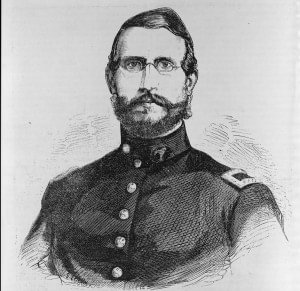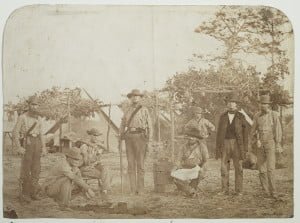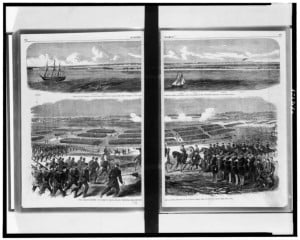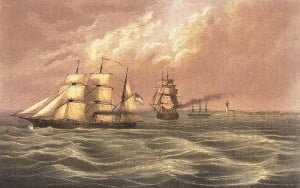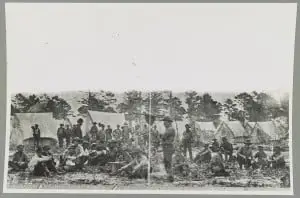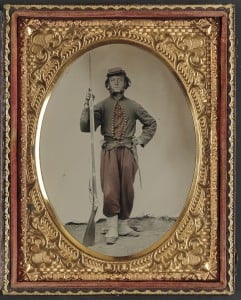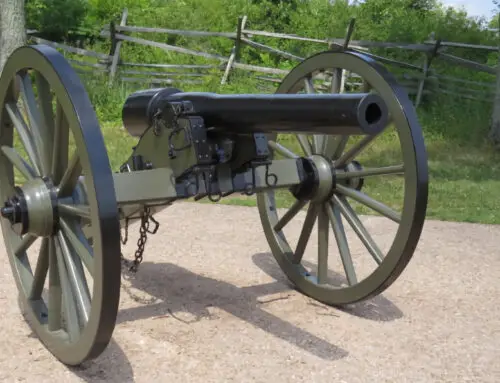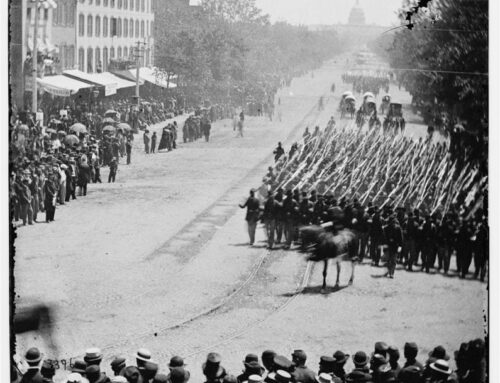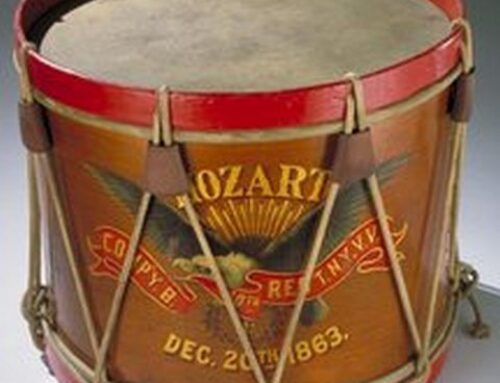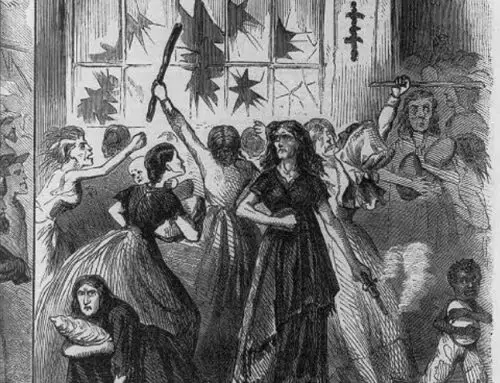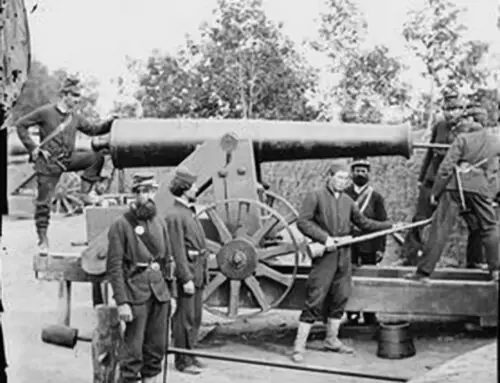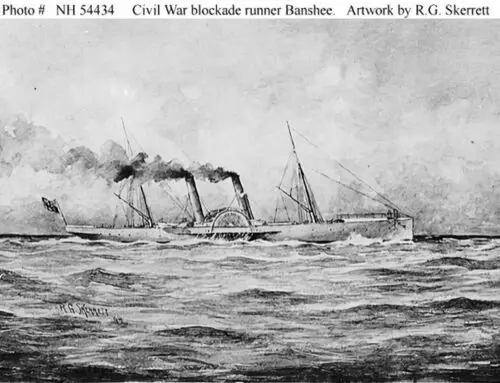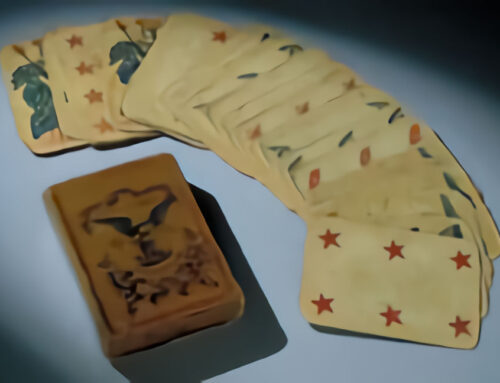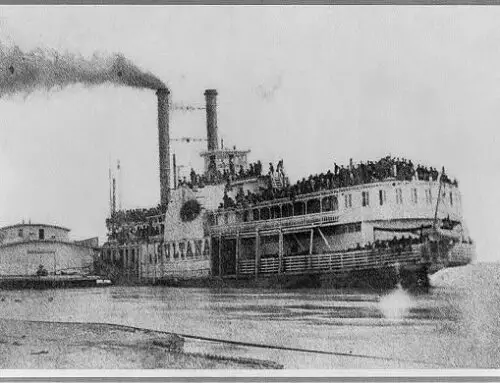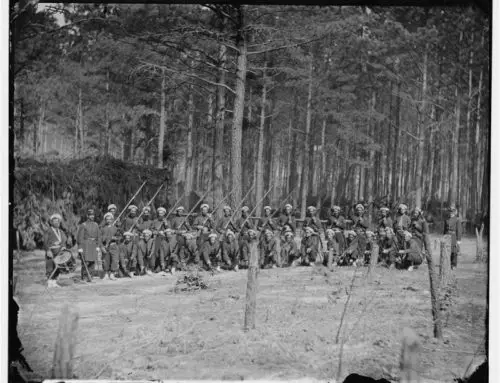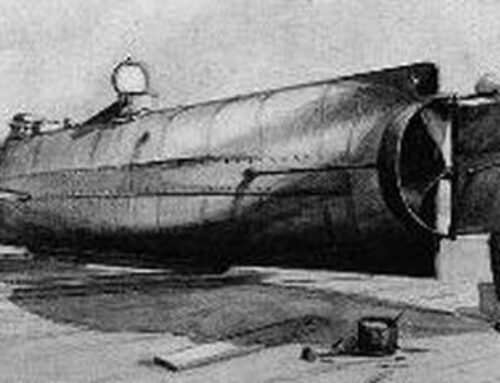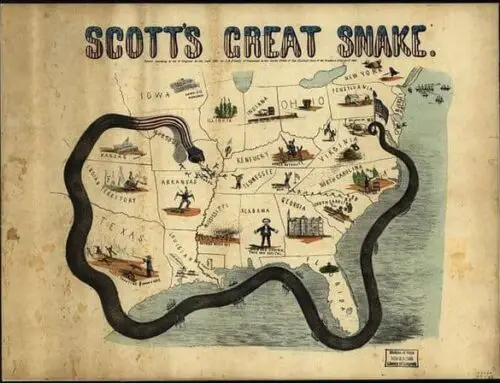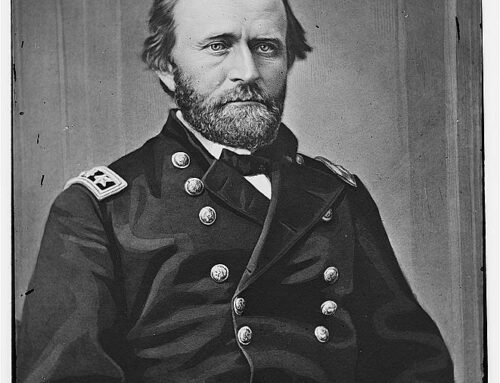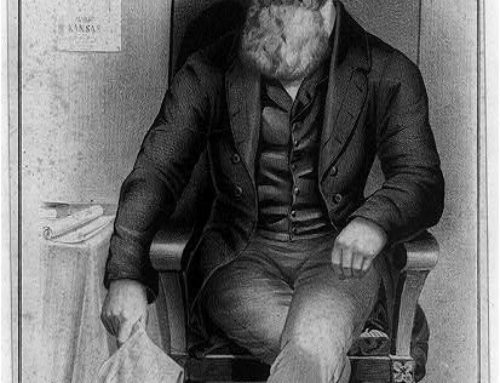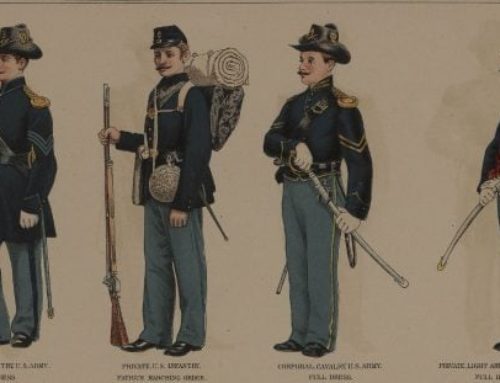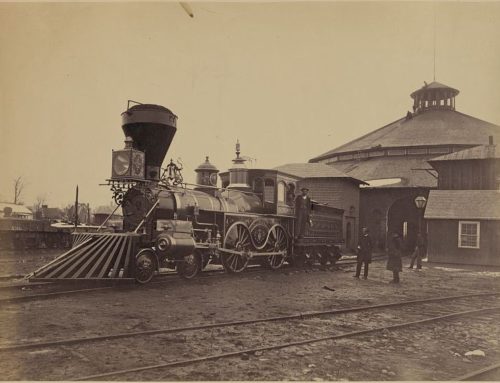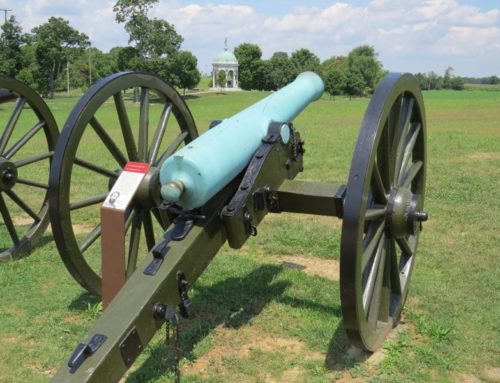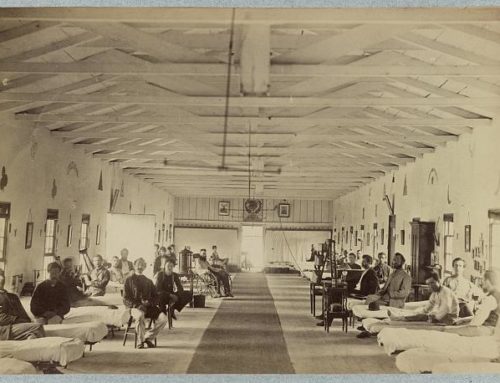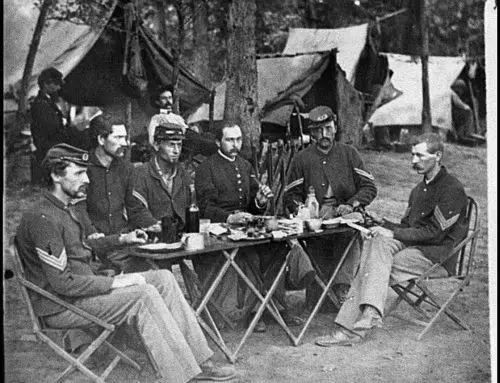Fort Pickens protects Pensacola Bay and the navy yard in the state of Florida. Fort Barrancas, the Barrancas barracks and Fort McRee also protect Pensacola Bay however Fort Pickens is the biggest and strongest fort in the area.
On January 10th 1861 Florida seceded from the United States. All of the forts commanded by the United States in Florida now became the target of Florida state troops. Florida also had one arsenal called Apalachicola near the town of Chattahoochee. The arsenal was seized by Florida state troops on January 6th 1861.
On January 10th the commanding officer in charge of the Pensacola Bay fortifications First Lieutenant, First Artillery Adam Slemmer transferred his command from Fort Barrancas and the Barrancas Barracks to Fort Pickens. He made the decision to transfer his forces after hearing rumors that the people of Florida were going to seize all of the forts around Pensacola harbor and also that all of the forts in Mobile Bay Alabama had already been taken.
Fort Pickens was a much stronger fort that commands Pensacola harbor, the other forts, and the navy yard. It was also much easier to send reinforcements to Fort Pickens than to any other fort in the area. The commander of the nearby navy yard Commodore Armstrong sent Lt. Slemmer a supply ship and the steamer Wyandotte
The navy yard just to the north of Fort Pickens was besieged and taken by Florida state troops on January 12th.
Also on January 12th Fort Barrancas and the Barrancas Barracks were taken as well.
After occupying Fort Pickens Lt. Slemmer immediately began improving the defenses of the fort.
Lt. Slemmer had 46 men from Company G. First Artillery and an additional 31 men from the navy. In total Lt. Slemmer had only 82 men including officers to defend Fort Pickens. They had five months worth of provisions.
The armament of Fort Pickens that was mounted and serviceable totaled 54 artillery pieces
- Fourteen 32-pounders
- Seven 12-pounders
- One 8 inch sea coast howitzer
- One 10-inch Columbiad
- Six field pieces
- Twenty-five 24-pounder howitzers
Florida Demands Fort Pickens Surrender
On January 12th Fort Pickens was approached by four men Mr. Abert who was the engineer of the navy yard, Captain Randolph, Major Marks, and Lieutenant Rutledge. They said they were citizens of Florida and Alabama and demanded entrance to the fort. When this was refused they then demanded a surrender of the fort on behalf of the governors of Florida and Alabama. Lt. Slemmer refused saying he was there under orders from the United States government and he did not recognize any right of any governor to demand the fort be surrendered. After this refusal the four men immediately left.
Shot Fired at Fort Pickens
On the rainy and dark night of January 13th ten men were seen outside of the fort. They were apparently scouting the area to find out more information about the fort and it’s defenses. A shot was fired by the group of men, a return shot was fired from a sergeant in the fort. The men outside the fort quickly withdrew. This event is perhaps the first exchange of fire that took place between the United States government and rebel forces, three months prior to the official start of the Civil War.
Second Demand for Fort Pickens to Surrender
On January 15th the commander of all state troops in the state of Florida Colonel William Chase requested a meeting with Lt. Slemmer. On behalf of the governor of Florida he demanded that Fort Pickens surrender. In response to this demand Lt. Slemmer asked Colonel Chase how many men he had? Colonel Chase replied he had between eight and nine hundred troops.
Lt. Slemmer asked Colonel Chase to give him some time to think it over. He did this to buy time to rest his men who were exhausted from constantly standing being on alert in case of attack. The following day January 16th Lt. Slemmer gave Colonel Chase his response. He refused to surrender the fort. He said he would only surrender if he and his men were overcome with overwhelming odds.
Third Demand for Fort Pickens to Surrender
On January 18th Colonel Chase again demanded the surrender of Fort Pickens. Lt. Slemmer again, refused. Stating that he had no reason to change his answer of January 16th.
Reinforcements Are Sent to Fort Pickens
On January 24th Captain Israel Vogdes of Company A First Artillery regiment set sail aboard the sloop of war Brooklyn with his company, supplies and ammunition from Fort Monroe, Virginia. He was ordered to go to Fort Pickens to reinforce the garrison there. Captain Vogdes arrived in Pensacola on February 6th after a brief stop at Fort Taylor in the Florida Keys to drop off some artillery and other supplies. He assumed command of Fort Pickens however he was not permitted to land his troops and reinforce the fort.
When he arrived at Fort Pickens he received a message from the United States Secretary of War Edwin Stanton and the Secretary of the Navy ordering him not to reinforce Fort Pickens. He was instead to only deliver the supplies but to keep his men on board the sloop Brooklyn anchored near the fort. He was only to reinforce the fort if it came under attack, or if it was in danger of being attacked.
A truce had been reached between the Florida government and the United States government. The Florida government agreed not to attack Fort Pickens if it was not reinforced, the United States government agreed not to reinforce the fort. Attempting to reinforce the fort would provoke the Florida troops to immediately attack the fort. At this stage neither side wanted to provoke each other, and they were both trying to avoid any event that may lead to hostilities breaking out.
On March 12th Captain Vogdes received orders to land his troops and reinforce Fort Pickens. However a dispute had arisen between Captin Vogdes and Lt. Slemmer about who was in command of Fort Pickens. Lt. Slemmer claimed that the dispatch ordering Captain Vogdes not to reinforce the fort superseded Captain Vogdes original orders to reinforce the fort and assume command. Captain Vogdes after receiving new orders to reinforce the fort on March 12th protested that he could not send his troops from the steamer Brooklyn into the fort since Lt. Slemmer was disputing Captain Vogdes right to command. Captain Vogdes decided to remain with his men on the Brooklyn.
Second Reinforcement of Fort Pickens
On April 1st General Winfield Scott ordered Colonel Harvey Brown to travel to New York and take command of four companies of troops for an expedition to reinforce and hold Fort Pickens.
He was appointed as the commander of the Department of Florida, which put him in charge off all military forces in Florida and the islands in the Gulf of Mexico, which included Fort Taylor and Fort Jefferson in the Florida Keys.
Colonel Brown set sail from New York on April 7th and arrived first in Key West on April 13th to inspect Fort Taylor and Fort Jefferson and issue orders for their defense.
On April 12th (the same day the bombardment at Fort Sumter in Charleston Harbor began) Secretary of the Navy Gideon Welles ordered Fort Pickens reinforced by the troops of Captain Vogdes still aboard the steamer Brooklyn. However the commander of the naval squadron outside of Fort Pickens Captain Adams still had orders from the Secretary of the Navy and the Secretary of War not to land any troops unless the fort was under attack or in danger of being attacked.
These orders were never revoked, and the new orders contradicted them, therefore Captain Adams refused to land Captain Vogdes and his men at the fort. It was only after Lt. Slemmer requested that Captain Adams allow the troops to be landed because he feared an imminent attack by the Confederates that Captain Adams disembarked the reinforcements which were sent to the fort without incident that night.
Lt. Slemmer was wrong about the impending attack. The Confederates had no plans to attack Fort Pickens that night. They were surprised to find out that reinforcements had been landed, which violated the agreement that none would be landed.
Meanwhile Colonel Brown was proceeding to Fort Pickens as well. He arrived at the fort on April 17th. He was very unimpressed with the defenses of the fort. He immediately put his men to work strengthening it’s defenses. The Confederates surrounding the fort numbered around 7,000. Colonel Brown immediately sent a message to Brigadier General Braxton Bragg who had assumed command of all Confederate troops near Pensacola Florida on March 7th.
Colonel Brown stated that his arrival at the fort and it’s preparations were purely defensive in nature and he would not do anything to provoke any hostile action against the Confederates.
On April 18th Colonel Brown made Fort Pickens the headquarters for the Department of Florida.
As of April 25th Colonel Brown had 992 men to garrison Fort Pickens and the island of Santa Rosa. On the Union ships anchored near Pensacola Bay there was an additional 1,625 navy crewmen that could be called upon in case there was an attack on the fort. In total Colonel Brown had 2,617 men at his disposal. He was still heavily outnumbered by Confederate forces, which numbered between 5,000 and 7,000 men.
As of May 25th the Confederates had around 8,000 to 10,000 men.
Colonel Brown ordered the construction of several batteries outside of the fort and placed two companies of troops in camps three quarters of a mile from the fort to further protect against a Confederate landing on the beaches.
Third Reinforcement of Fort Pickens
On May 29th Secretary of War Simon Cameron ordered that one regiment of New York volunteer troops, many artillery pieces with as much ammunition as possible and provisions be sent to Fort Pickens. The island of Santa Rosa was to be reinforced and batteries built to defend the island from attack.
By July 11th fifteen of Colonel Brown’s officers and his staff who were stationed at Fort Pickens were transferred to other locations and left the fort. He also lost two of his best companies of soldiers when they were also transferred away from Fort Pickens. This left Colonel Brown with an inadequate force to defend the fort. He had at this time only eight officers under his command at Fort Pickens and the batteries on Santa Rosa island. He should have had 28 officers. He also only had half the enlisted men he needed to be able to defend the fort if it were attacked. The volunteer reinforcements he was sent were not sufficient.
Colonel Brown objected strongly to these reinforcements coming to Fort Pickens. Volunteer troops were not trained to handle cannons and could not be taught how to do it properly in a short amount of time. He regarded the volunteers as useless when it came to defending the fort. He instead requested more officers be sent and that four companies of regular troops be sent as reinforcements instead of the volunteers.
Confederate Forces Attack Fort Pickens
At two o’clock in the morning of October 9th 1861 a force of 1,000 Confederate troops led by Brigadier General Richard Anderson landed on Santa Rosa island about four miles from Fort Pickens. This attack was a raid in order to cause as much destruction as they could against any building, batteries, or camps they found. It was not a full scale invasion to take the island. The landing went completely unnoticed by the Union troops on the island.
The Confederates divided their troops into three columns. One column under Colonel Chalmers marched along the north beach of the island, Colonel Anderson with his column marched down the south beach of the island and the third column under Colonel Jackson followed a few hundred yards behind Colonel Chalmers column to eventually head toward the middle of the island.
The columns marched for three to four miles in silence, their goal was to set up their lines between Fort Pickens and the encampment of the Sixth New York Volunteer Zouave regiment.
The surprise attack was ruined when a Union sentry spotted one of the columns and fired at them. The sentry was killed when the Confederates returned fire. The Union was now aware of the attack. The Confederates began advancing as rapidly as they could. The column under Colonel Jackson raced to the Sixth NY volunteers camp, discovering the camp nearly empty as the troops had fled before them. Colonel Jackson’s men quickly began burning the tents, store houses, and sheds of the camp. The other two columns soon joined them in destroying the camp.
The Confederates were then prepared to proceed against the artillery batteries on the island in order to destroy them as well. It was decided however with dawn fast approaching to leave the island. The Confederates began marching back to their landing areas, however half way back to the boats they were intercepted by two columns of Union troops who had gotten behind them
The Confederates were immediately attacked by two companies of regular soldiers from the fort led by Major Vogdes (promoted from Captain and second in command of Fort Pickens).
Major Vogdes leading the attack in the dark found himself and his men intermingled in a large body of Confederate troops. He was immediately recognized and taken prisoner. His subordinate Captain Hildt took command and was able to separate his men from the Confederates, and opened fire on the rebels. The commander of Fort Pickens Colonel Brown ordered Major Arnold (third in command of Fort Pickens) to take two companies and attack the Confederates to support Major Vogdes men.
The Confederates continued to fall back to their boats eventually reaching them. As the Confederates began embarking on their boats the Union troops poured a heavy fire into the masses of Confederates as they tried to leave the island. The Union troops kept firing until the boats were out of range.
Union Casualties were as follows:
- 14 killed
- 29 wounded
- 24 captured including Major Vogdes
Confederate Casulties:
- 18 killed
- 39 wounded
- 30 captured
Fort Pickens Bombards the Confederates
On November 22nd 1861 Colonel Brown ordered the guns of Fort Pickens to open fire against the Navy Yard and the rebel batteries. The Confederates returned fire, however they were only able to knock out one of Fort Pickens guns. Fort Pickens on the other hand knocked out several of the rebel guns and set fire to the Navy Yard and the town of Warrington causing slight damage.
The bombardment lasted for two days. Colonel Brown wanted to bombard the Confederates in retaliation for their attack on October 9th.
Another bombardment took place on January 1st 1862 when a Confederate steam ship attempted to dock at the Navy Yard. Fort Pickens opened fire on this ship, in return the rebel batteries returned fire. The firing lasted until 2 am on January 2nd. The Navy Yard took some damage but overall damage to both sides was minimal.
Fort Pickens was never taken by the Confederates and remained under Union control for the entire American Civil War.

